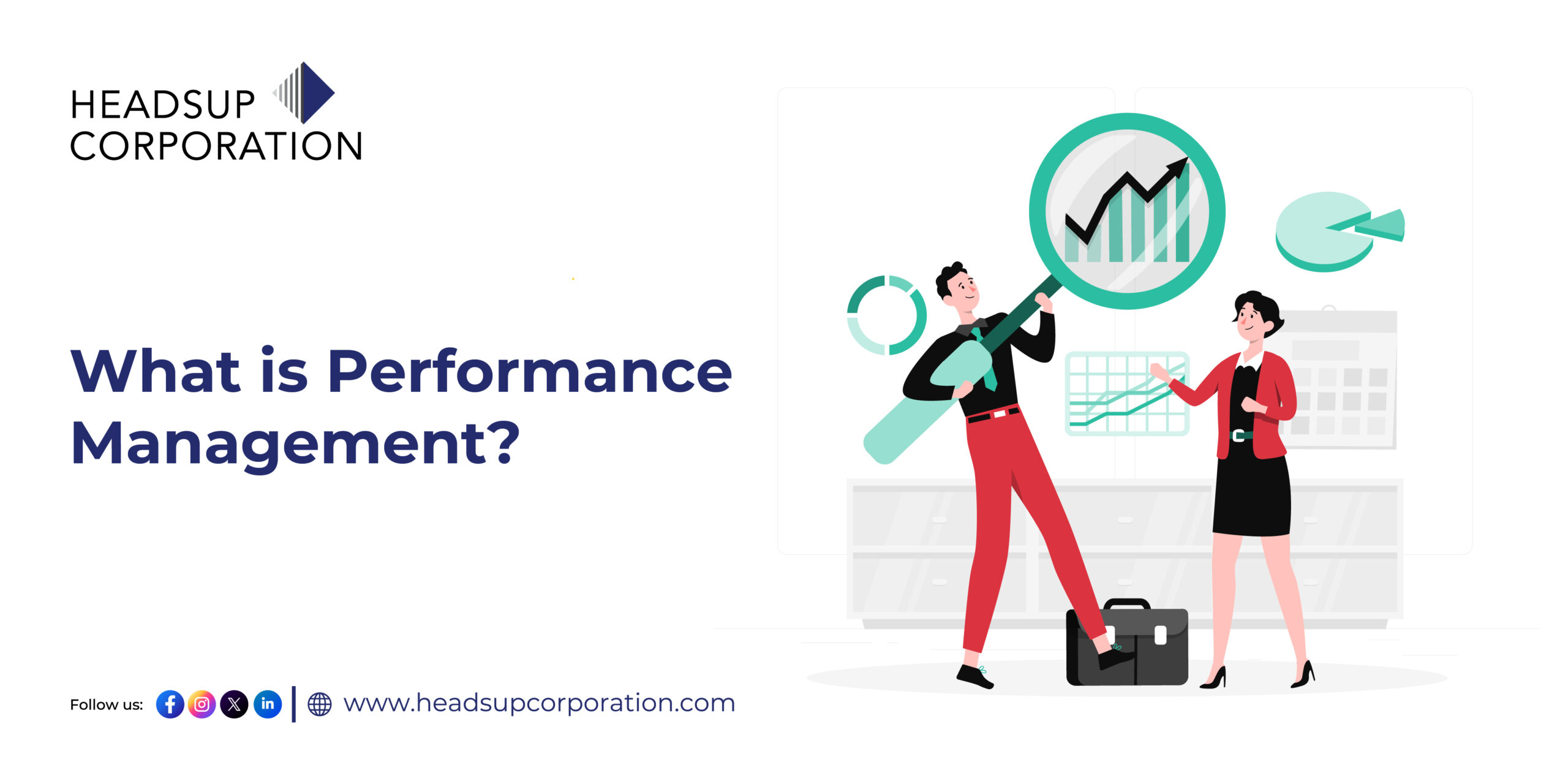
From Feedback to Growth: The Role of Performance Management and Appraisal in Employee Development
Did you know that 85% of workers aren’t happy with how performance reviews are done? At Headsup Corporation, we firmly believe that good performance management can promote employees’ growth on both a personal and professional level. Learn how Headsup Corporation promotes a culture of continuous growth and professional development through skill-building activities and a rejuvenated performance management practice!
Understanding Performance Management and Appraisal
Understanding Performance Management and Appraisal means understanding their core functionality. It’s about making sure employees are doing their best to help the company do well. To do this, you need to know what each person does and what the company wants, and then do thorough evaluations. Headsup Corporation is an expert at helping companies and their employees do their best through Performance Management and Appraisal.
The Human Resource Management Feedback Loop: Driving Employee Development
The feedback loop within performance management appraisal is the engine propelling employee development forward. Feedback in the dynamic modern workplace is not just about flaws; it fuels the engine of development. This entails many strategies that encourage open discussion between managers and staff, from official performance reviews to casual talks.
Listening to positive feedback helps employees understand how well they’re doing at work. It helps them identify their areas of strength and improvement. This regular input promotes transparency and teamwork within the company in addition to helping individuals grow. Over time, it sustains the business’s growth and prosperity.
Addressing Challenges and Best Practices in Performance Management
Navigating the terrain of challenges and best practices in performance appraisal demands astute management of various issues and challenges like:
Challenges in Performance Management:
- Goal Setting Ambiguity: Ambiguity in defining clear and measurable objectives can hinder alignment between employee efforts and organisational goals.
- Feedback Gaps: Lack of regular feedback mechanisms may impede employee growth and hinder performance improvement.
- Technology Limitations: Outdated or inefficient technology can hinder data collection and analysis, slowing down the performance management process.
- Skill Gaps: Managers may lack adequate training in performance evaluation techniques, leading to inconsistent or ineffective assessments.
- Low Engagement Levels: A lack of engagement among employees can diminish motivation and productivity, making it challenging to achieve performance targets.
Best Practices in Performance Management:
- Clear Goal Setting: Establish clear and measurable objectives to ensure alignment between employee actions and organisational goals.
- Regular Feedback: Implement regular feedback loops to facilitate ongoing communication and support employee development.
- Technology Integration: Utilise modern tools and software for efficient data collection, analysis, and reporting.
- Training and Development: Invest in training programs to equip managers with the necessary skills to conduct effective performance evaluations.
- Fostering Engagement: Cultivate a culture of engagement through initiatives such as recognition programs and opportunities for employee involvement in decision-making processes.
Integrating Performance Appraisal into Performance Management Strategies
It’s really important for performance appraisal to work well with HR plans to make sure company goals and values match up. Here’s how companies can do this effectively:
- Matching Goals: Make sure the way performance reviews are done supports what the company aims to achieve.
- Customization: Customise how performance reviews are done to fit with what the company is like making them genuine and meaningful.
- Always Improving: Encourage always looking at how things are done and making them better, seeing performance reviews as part of a changing HR plan.
- HR Leadership: Lastly, let HR experts lead the way in setting up and running performance reviews, using their knowledge to make them work well.
By blending performance Management into HR plans smoothly, companies can make the most of their employees and keep growing steadily. To read more knowledgeable stuff you can check our performance management blogs.
Take Charge: Act Now for Organisational Success
It’s evident that optimising operations is crucial for any company’s success. Therefore, we advocate for companies to consider upgrading their PMS systems. This transition can enhance efficiency and effectiveness, leading to better overall performance. At, Headsup we assist companies in optimising their performance management operations with our advanced services. Our services promote:
- Make Excellence a Priority: Put a lot of focus on improving how performance reviews are done in HR plans, seeing how important they are for helping employees grow.
- Try New Things: Use new technology and data analysis to change how performance reviews are done, making them more accurate and faster.
- Work Together: Create a work environment where everyone gives each other feedback all the time, making it a normal part of how things are done.
- Improving through Learning and Development: Keep working on getting better all the time, investing in training and opportunities for everyone based on their reviews.
Ready to elevate your company’s performance management? Upgrade your PMS systems with Headsup’s advanced services today and prioritise excellence, embrace innovation, foster collaboration, and fuel continuous improvement!






